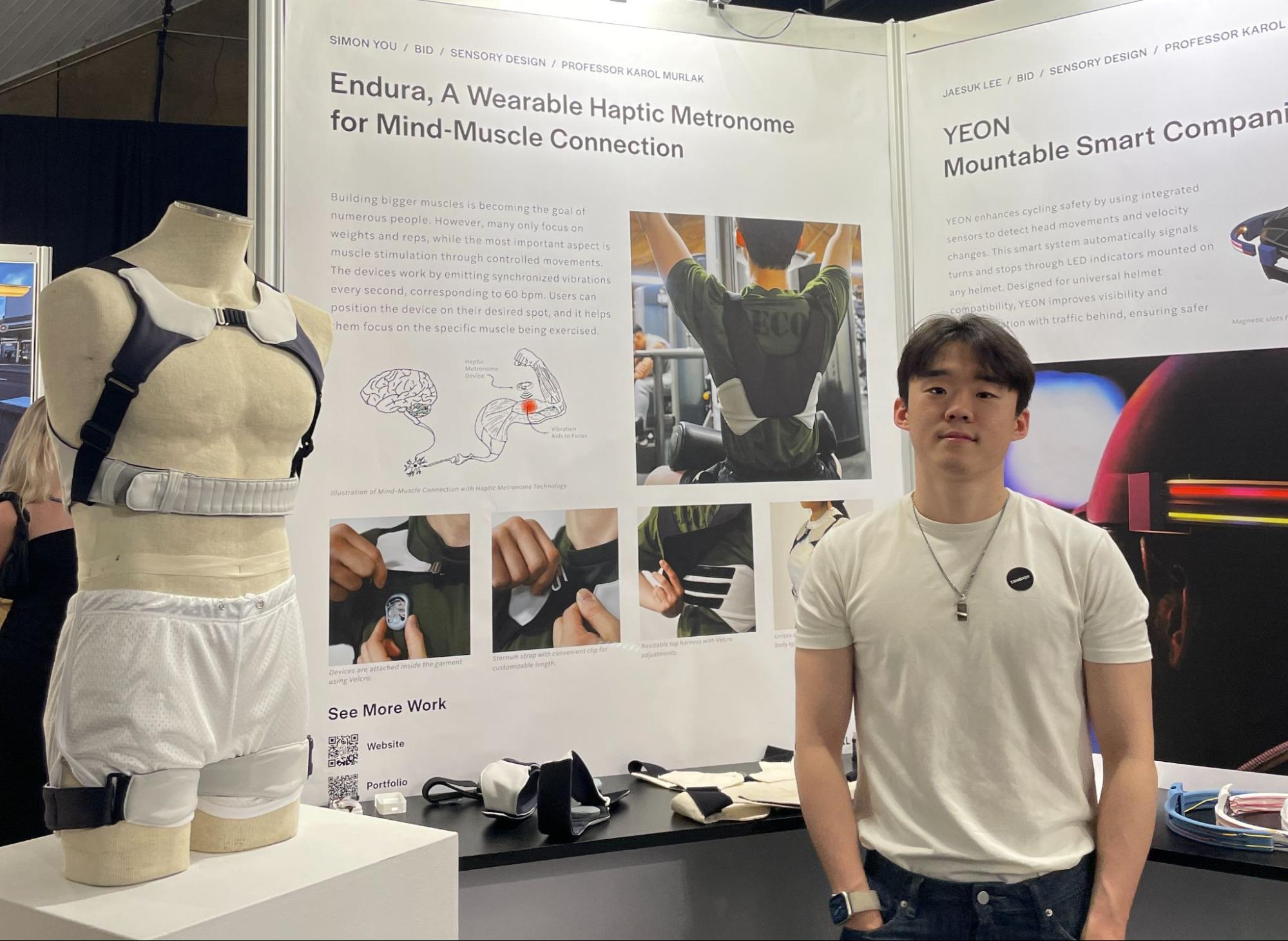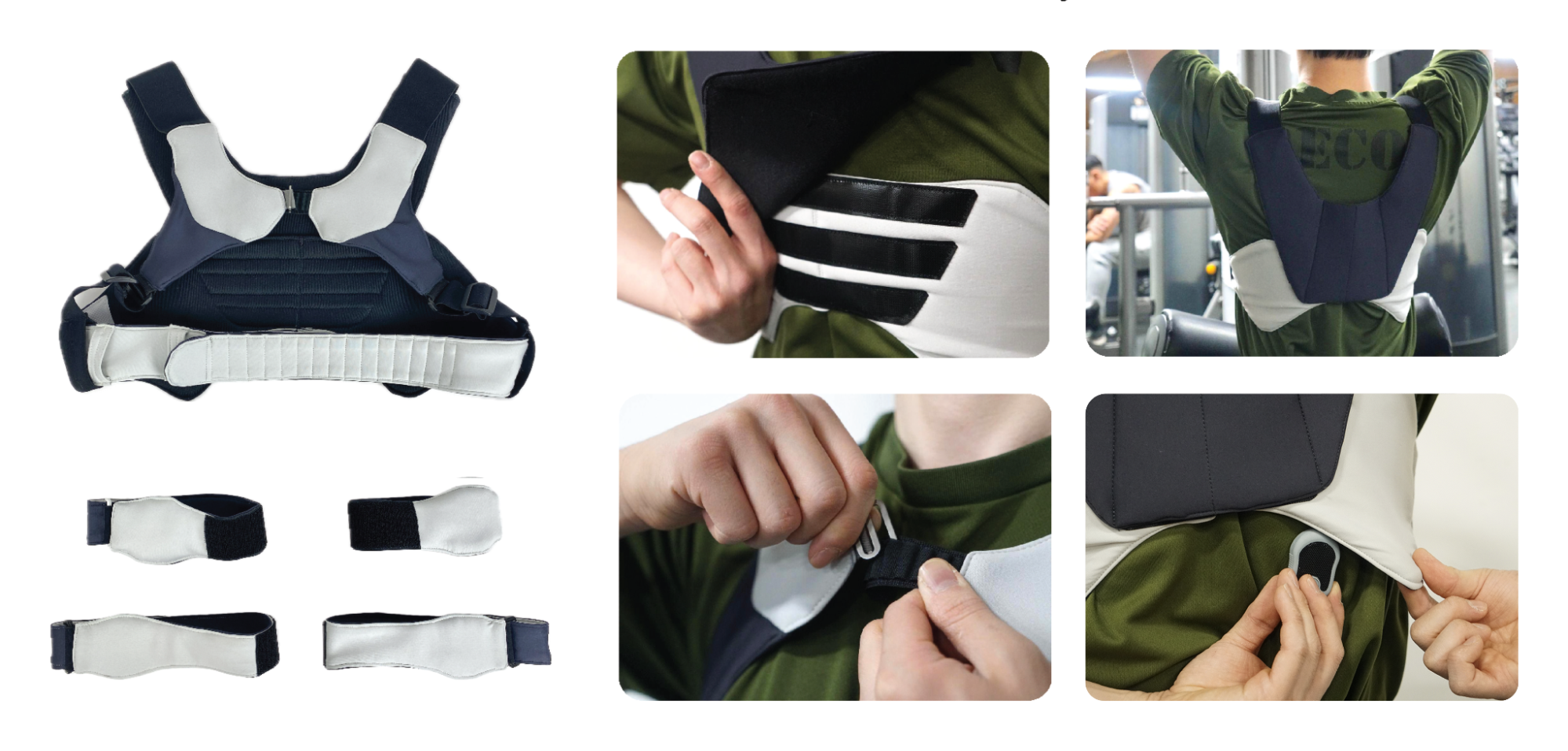2025-05-23
Daniel Hartman
Design Dispatch, New York

Every year, the Pratt Show in New York City marks a critical moment on the design industry’s calendar — not just as a student showcase, but as a barometer of what’s next in design innovation. Curated by Pratt Institute, one of the world’s most prestigious art and design schools, the annual exhibition has earned a reputation for launching standout careers and spotlighting work that blends rigor, creativity, and cultural relevance.
Pratt Show 2024, was no exception. Among the standout projects was Endura, an intelligent wearable developed by industrial designer Seokhun You, which captured attention for its clean design, scientific backing, and deep understanding of user behavior. The project was part of You’s capstone thesis and represents a refined example of how human-centered design can be applied to solve overlooked problems — in this case, the often-neglected mind-muscle connection in strength training.
To understand the significance of Endura’s appearance at the show, it’s important to recognize what the Pratt Show represents. Drawing in design professionals, recruiters, curators, and media from around the world, the exhibition is known for its high standards and curated selection of final-year projects across industrial design, communication design, digital arts, and more. Many consider it a proving ground for future leaders in the creative industries.
Exhibited within this rigorous context, Endura stood out for the clarity of its concept and the sharpness of its execution. The wearable haptic metronome is designed to improve strength training outcomes by enhancing the mind-muscle connection — a fitness principle that emphasizes focus and control during movement. The device uses soft, wearable sensors that emit rhythmic vibrations at 60 bpm, guiding users through steady, muscle-specific repetitions that improve engagement and performance.
You’s idea was sparked by both personal interest and research-backed evidence. His survey of 35 gym-goers revealed a disconnect: while most aim to grow stronger, many struggle to maintain focus or tempo during workouts. Endura bridges that gap, particularly for intermediate to advanced athletes who want more control but don’t need beginner-oriented tools.
The project’s success lies not just in its function, but in its process. Rather than leading with hardware or flashy features, You rooted his design in human experience. Every decision — from materials and placement to usability — came from iterative prototyping, field testing, and direct user feedback. It’s this commitment to empathy and refinement that made Endura such a strong fit for the Pratt Show’s values: design that listens, adapts, and ultimately improves everyday life.
As visitors navigated the exhibition, Endura offered a quiet but powerful story — one that fused science and sensation, minimalism and depth. And in a showcase known for its diversity of ideas, it demonstrated that even a subtle intervention, when done thoughtfully, can feel revolutionary.

Though Endura is currently a prototype, its potential extends well beyond its current form. The wearable could find future applications in physical therapy, rehabilitation, and sports performance — environments where precision and muscle awareness are critical. And its presence at Pratt Show 2024 has already sparked conversations among industry professionals about its adaptability and promise.
With a background in behavioral research and a focus on wearable technology, Seokhun You embodies the next wave of designers who prioritize functionality, nuance, and real-world application. His philosophy is simple: design should feel invisible — yet profoundly impactful. With Endura, he’s created something that lives up to that ideal.
At Pratt Show 2024, You didn’t just exhibit a project. He entered a conversation — one about how design can shape physical experiences, influence focus, and transform the ordinary into something intentional. In a showcase defined by vision and execution, Endura left a lasting mark.